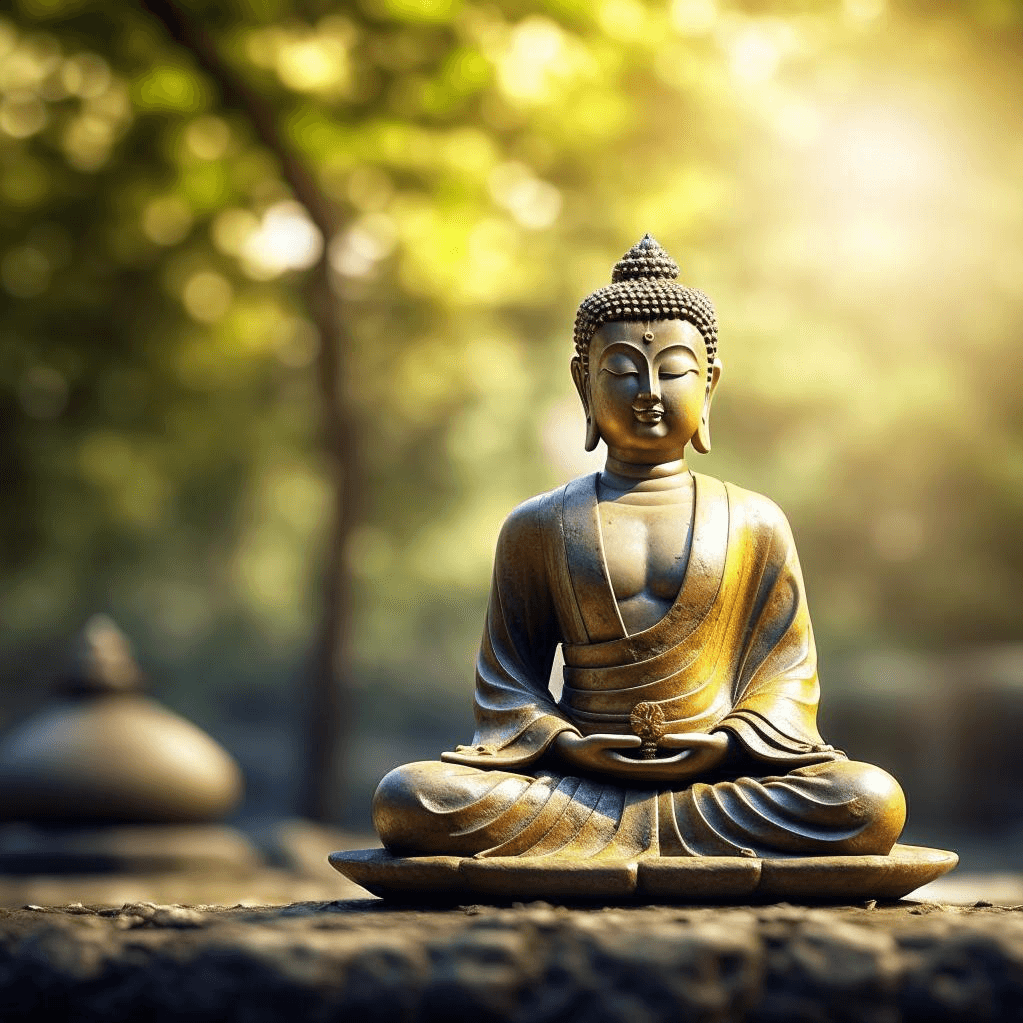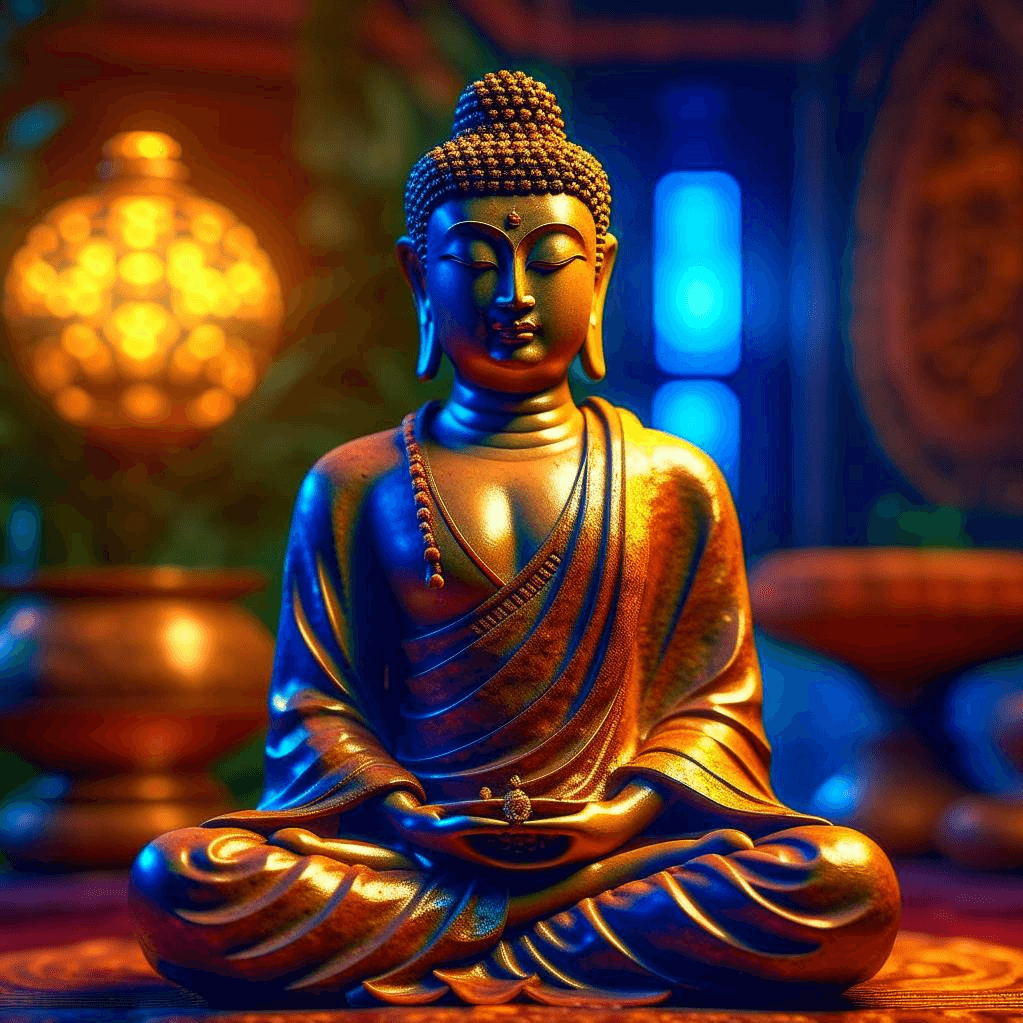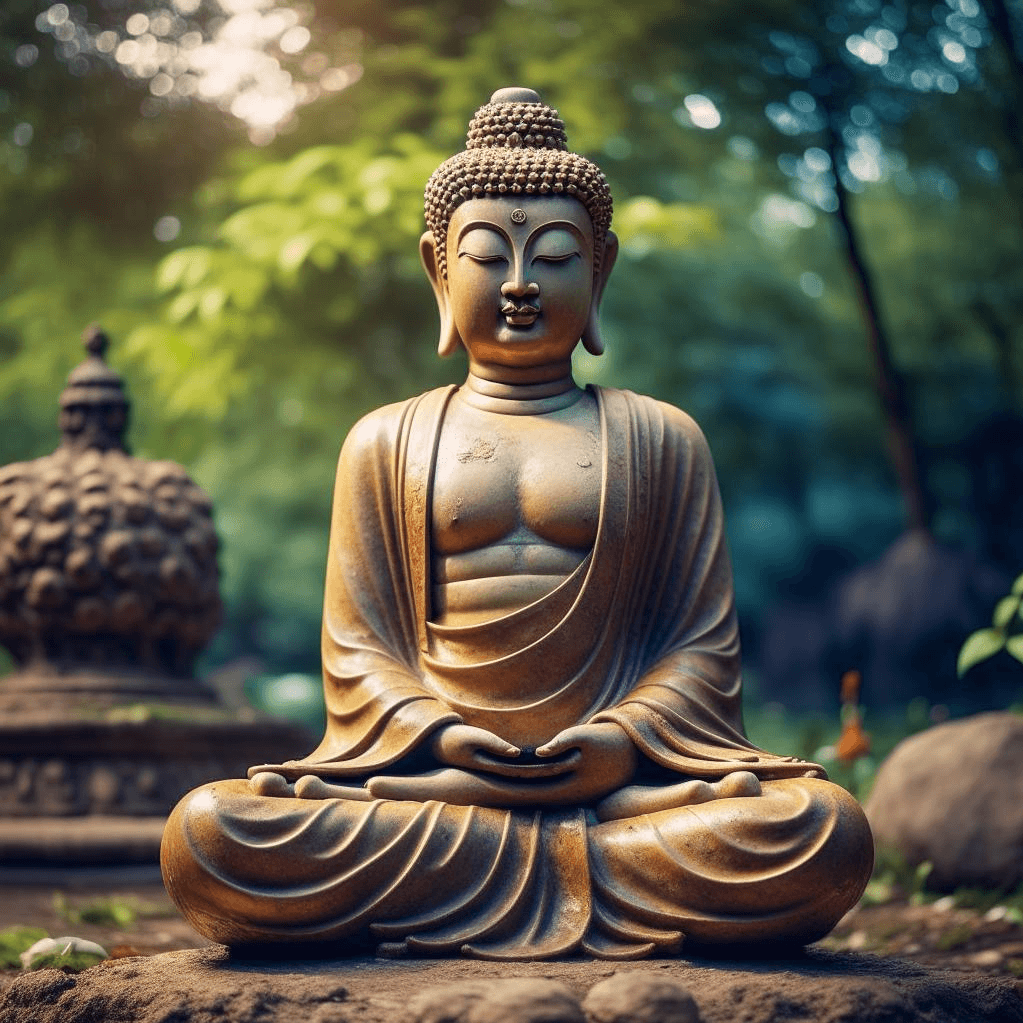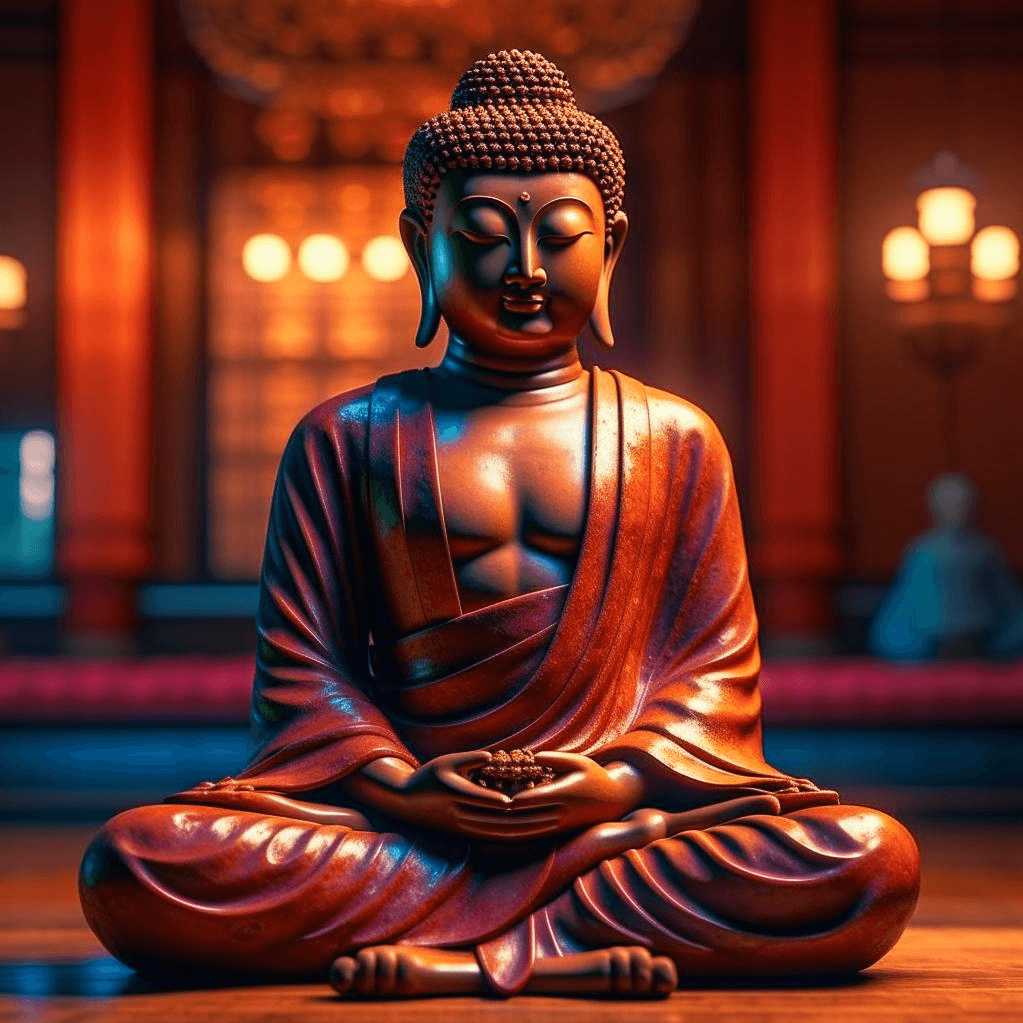Buddhist meditation is a powerful practice that has been used for centuries to find inner peace and clarity. It offers a way to calm the mind, reduce stress, and cultivate a sense of happiness and well-being. Whether you’re a beginner or have some experience with meditation, incorporating Buddhist meditation techniques into your daily routine can bring about positive changes in your life. In this article, we will explore easy and effective Buddhist meditation techniques that anyone can try, even if you’ve never meditated before. So, get ready to embark on a journey of self-discovery and tranquility as we delve into the world of Buddhist meditation.
Contents
I. Understanding the Basics of Buddhist Meditation
II. Preparing for Meditation
III. Mindfulness Meditation
IV. Loving-Kindness Meditation
V. Walking Meditation
VI. Overcoming Common Challenges
VII. Conclusion
I. Understanding the Basics of Buddhist Meditation

Meditation is a practice that has been around for centuries and is an important part of Buddhism. It helps individuals find inner peace and cultivate a sense of mindfulness and compassion. Buddhist meditation is not just about sitting quietly, but also about training the mind to be present and aware in every moment.
When we meditate, we enter a state of deep relaxation and focus. This allows us to let go of worries and stress, and connect with our inner selves. Through meditation, we can gain insight into the nature of our own minds and develop a greater understanding of the world around us.
One of the main goals of Buddhist meditation is to achieve enlightenment, which is the ultimate state of liberation and awakening. While this may sound like a lofty goal, even beginners can benefit from the practice. Meditation can help reduce anxiety, improve concentration, and promote overall well-being.
In Buddhist meditation, there are various techniques that can be used. One common technique is mindfulness meditation, where we focus our attention on the present moment without judgment. This helps us become more aware of our thoughts, emotions, and sensations, and allows us to develop a greater sense of clarity and acceptance.
Another technique is loving-kindness meditation, where we cultivate feelings of love, compassion, and kindness towards ourselves and others. This practice helps us develop a sense of interconnectedness and empathy, and can lead to greater happiness and harmonious relationships.
It’s important to note that meditation is not about achieving a specific outcome or forcing the mind to be still. It’s about gently guiding the mind back to the present moment whenever it wanders. With regular practice, meditation becomes easier and more natural.
So, whether you’re a beginner or an experienced meditator, Buddhist meditation offers a path to inner peace and self-discovery. Give it a try and see how it can transform your life for the better.
II. Preparing for Meditation

Before you begin your meditation practice, it’s important to prepare yourself and create a conducive environment. Here are some simple steps to get started:
A. Creating a suitable environment: Find a quiet and peaceful space in your home where you can meditate without distractions. Clear the area of any clutter or unnecessary objects. You can also add some calming elements like candles, incense, or soft music to enhance the ambiance.
B. Choosing a comfortable posture: Sit in a position that allows you to be relaxed yet alert. You can sit cross-legged on a cushion or on a chair with your feet flat on the ground. Keep your back straight but not rigid, and let your hands rest comfortably on your lap or knees.
C. Setting a regular schedule: Consistency is key in meditation. Choose a time of day that works best for you and try to stick to it. Whether it’s early morning, during lunch break, or before bed, find a time when you can dedicate a few minutes to your practice every day.
Remember, these preparations are meant to create a peaceful and comfortable space for you to delve into your meditation practice. Feel free to personalize your environment and posture based on what makes you feel at ease and focused.
III. Mindfulness Meditation

Mindfulness meditation is a powerful technique that can help you find inner peace and clarity. It involves focusing your attention on the present moment and becoming aware of your thoughts, feelings, and sensations without judgment. This practice can bring about a sense of calm and help you better understand yourself and the world around you.
To start practicing mindfulness meditation, find a quiet and comfortable place where you won’t be disturbed. Sit in a relaxed position, either on a cushion or a chair, with your back straight but not rigid. Close your eyes or keep them softly focused on a specific point.
Begin by taking a few deep breaths, allowing your body to relax with each exhale. Then, shift your attention to your breath. Notice the sensation of the air entering and leaving your nostrils or the rise and fall of your abdomen.
As you focus on your breath, thoughts may arise. This is normal. Instead of getting caught up in these thoughts, simply observe them without judgment and let them go. Imagine your thoughts as passing clouds in the sky, gently drifting away.
Whenever you find your mind wandering, gently bring your attention back to your breath. Be patient with yourself as this may happen repeatedly. Remember, the goal is not to stop your thoughts but to cultivate a nonjudgmental awareness of them.
As you continue practicing mindfulness meditation, you may notice a greater sense of calm and clarity in your everyday life. This technique can help you become more present and less reactive to stressful situations. It can also enhance your ability to focus and concentrate.
To deepen your mindfulness meditation practice, try incorporating it into your daily routine. Set aside a specific time each day to meditate, even if it’s just for a few minutes. Consistency is key to experiencing the long-term benefits of this practice.
Remember, mindfulness meditation is a journey, and it’s okay to start small. Be kind to yourself and approach each session with an open mind and heart. With regular practice, you’ll gradually develop a greater sense of inner peace and well-being.
IV. Loving-Kindness Meditation

Introduction to loving-kindness meditation:
Loving-kindness meditation is a beautiful practice that helps us cultivate feelings of love, kindness, and compassion towards ourselves and others. It is a way to open our hearts and spread positive energy to the world around us.
Step-by-step guide for beginners:
Cultivating feelings of love and kindness towards oneself:
Start by sitting comfortably and closing your eyes. Take a few deep breaths to relax your body and mind. Imagine yourself surrounded by a warm, loving light. Repeat phrases like “May I be happy, may I be healthy, may I be safe” in your mind or softly out loud. Feel the love and kindness flowing towards yourself.
Extending those feelings to loved ones:
Now, bring to mind someone you love deeply, such as a family member or a close friend. Visualize them in your mind’s eye and send them the same loving-kindness phrases: “May you be happy, may you be healthy, may you be safe.” Imagine the love and kindness reaching them and filling their hearts.
Expanding the circle of compassion to include all beings:
In this step, broaden your focus to include all beings, both near and far. Think about people you may not know personally, animals, and even the Earth itself. Repeat the loving-kindness phrases: “May all beings be happy, may all beings be healthy, may all beings be safe.” Imagine the love and kindness spreading out to touch every living being on the planet.
Tips to deepen loving-kindness meditation:
– If you find it challenging to generate feelings of love and kindness, start by simply repeating the phrases and trust that the feelings will come with time.
– Practice loving-kindness meditation regularly to strengthen your ability to feel and express love and kindness.
– Be patient with yourself and don’t judge your experience. Each meditation session is unique, and some days may feel easier than others.
Remember, loving-kindness meditation is a powerful way to cultivate compassion and bring more love into your life and the lives of others. Embrace this practice and let it transform your heart and the world around you.
V. Walking Meditation

Walking meditation is a wonderful way to practice mindfulness while moving your body. It can be done indoors or outdoors, and it doesn’t require any special equipment. Here are some simple steps to get started with walking meditation:
1. Find a quiet and safe path: Look for a peaceful place where you can walk without any distractions. It could be a park, a garden, or even a quiet hallway in your home. Make sure the path is safe and free from obstacles.
2. Focus on the sensations of walking: As you start walking, pay attention to the physical sensations of each step. Feel the pressure on your feet as they touch the ground. Notice how your legs move and how your body weight shifts with each step. Stay present in the moment and let go of any thoughts or worries.
3. Cultivate awareness of the present moment: As you continue walking, bring your attention to the present moment. Be aware of your surroundings – the sounds, the smells, and the feel of the air on your skin. Notice the colors and shapes around you. Stay fully engaged with your senses.
Walking meditation can bring many benefits to your life. It can help you develop a greater sense of calm, focus, and clarity. It can also improve your physical well-being by increasing your awareness of your body and promoting better posture. Additionally, walking meditation can be a great way to connect with nature and find inner peace.
Remember, the most important thing is to enjoy the process and be present in the moment. So, put on your walking shoes and start your walking meditation journey today!
VI. Overcoming Common Challenges

Meditation can sometimes pose challenges, but with a little guidance, you can overcome them and continue on your meditation journey. Here are some common challenges you may encounter and some tips to help you overcome them:
1. Dealing with distractions and wandering thoughts: It’s natural for your mind to wander during meditation. When this happens, gently bring your focus back to your breath or the object of your meditation. Imagine your thoughts as clouds passing by, and let them go without judgment. Remember, the goal is not to eliminate thoughts, but to cultivate awareness and presence.
2. Managing physical discomfort during meditation: Sitting for extended periods can sometimes cause physical discomfort. Find a comfortable posture that works for you, whether it’s sitting on a cushion, using a meditation bench, or sitting in a chair. Experiment with different positions and cushions to find what suits you best. If you experience discomfort, try adjusting your posture or gently stretching before and after meditation.
Remember, meditation is a practice, and challenges are a normal part of the process. Be patient with yourself and approach your practice with kindness and curiosity. With time and consistency, you will develop a deeper understanding and experience the many benefits of meditation.
VII. Conclusion
In conclusion, Buddhist meditation offers a simple and effective way for newcomers to find inner peace and happiness. By practicing these easy techniques, you can experience numerous benefits such as reduced stress, improved focus, and enhanced compassion.
Remember to create a peaceful environment for your meditation practice, and choose a comfortable posture that allows you to relax. Setting a regular schedule will help you establish a consistent meditation routine.
Mindfulness meditation is a great starting point, where you focus on your breath and observe your thoughts without judgment. This practice helps you become more present and aware of the present moment.
Loving-kindness meditation allows you to cultivate feelings of love and kindness towards yourself and others. By expanding your circle of compassion, you can develop a deep sense of connection and empathy for all beings.
Walking meditation is another valuable technique that incorporates movement into your meditation practice. It allows you to focus on the sensations of walking and brings mindfulness into your everyday activities.
While you may encounter challenges like distractions and physical discomfort during meditation, with practice, you can overcome them. Remember to be patient and gentle with yourself as you embark on this journey.
In conclusion, by incorporating these easy Buddhist meditation techniques into your life, you can experience profound positive changes. So, start your meditation journey today and witness the transformative power of these ancient practices.











